Welcome to “12 Ways To Mid-Century Modern Interior Tips,” where classic elegance meets contemporary flair! Whether you’re stepping into the world of interior design for the first time or you’re a seasoned decorator looking to refresh your space, this guide is your key to capturing the timeless appeal of mid-century modern style. This list is not just a collection of ideas but a treasure trove of inspiration and practical insights that will empower you to create a home that’s both stylish and functional.
By diving into these twelve tips, you will uncover the secrets to seamlessly blending iconic design elements with your own personal touch. Discover how to maximize your space’s potential, enhance its beauty, and evoke the joy of a well-designed home. The journey of transforming your living space can be as delightful as the result itself, and with these techniques, you’re well on your way to achieving a harmonious balance of form and function. Get ready to feel confident and inspired as you turn your design dreams into reality with ease and flair!
Incorporate Iconic Furniture Pieces
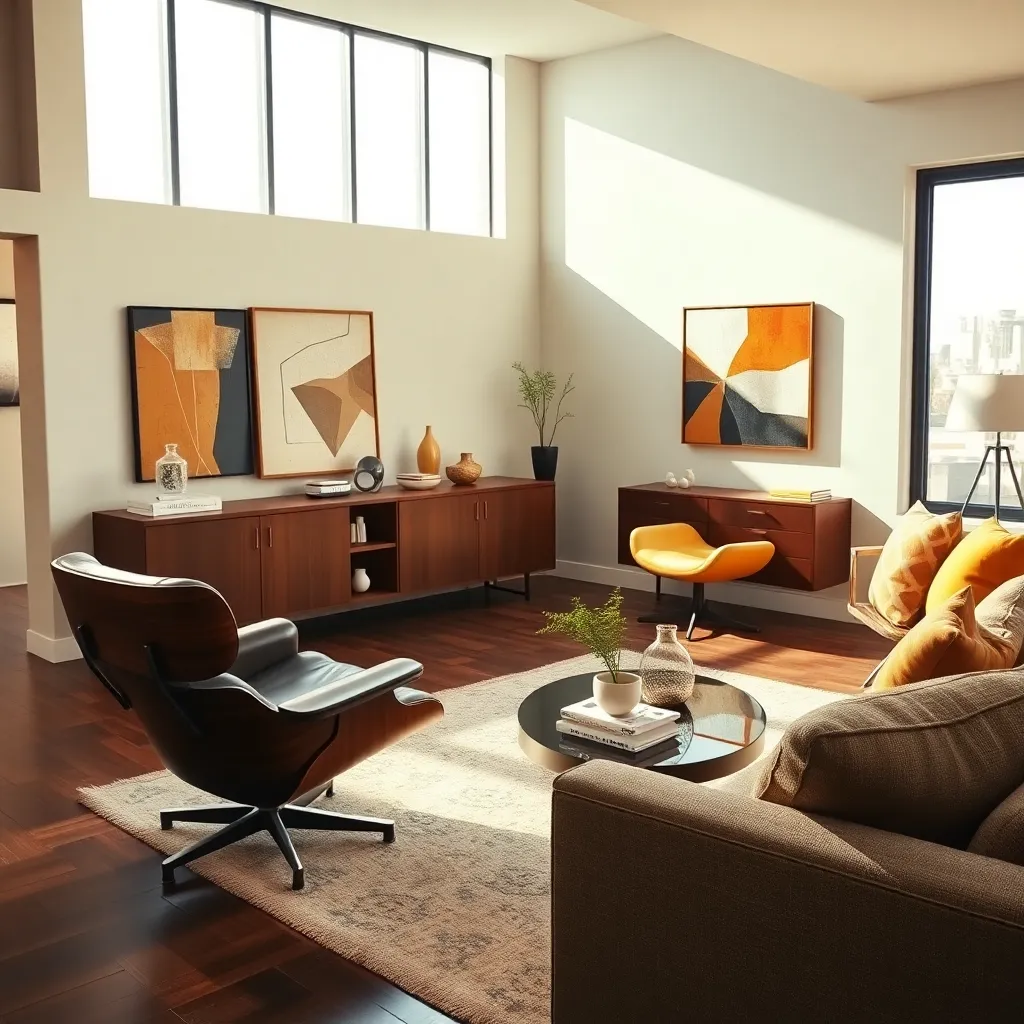
Incorporating iconic furniture pieces is a key element of achieving a mid-century modern aesthetic in your home. Start by selecting signature items like the Eames Lounge Chair or a Noguchi Coffee Table, which serve as focal points in any room.
Placement is crucial to highlighting these iconic pieces, so position them where they can draw attention and complement your room’s layout. For instance, place an Eames Lounge Chair near a window or in a reading nook to create a cozy, yet stylish retreat.
Consider the color scheme when selecting mid-century modern furniture; opt for earthy tones such as walnut, burnt orange, or olive green. Pair these hues with neutral walls and floors to allow the furniture’s unique shapes and colors to stand out.
For those already familiar with mid-century modern design, delve deeper by combining different materials. Mix a walnut dining table with chairs that feature metal accents to create a sophisticated yet harmonious contrast.
Choose Earthy, Muted Color Palettes
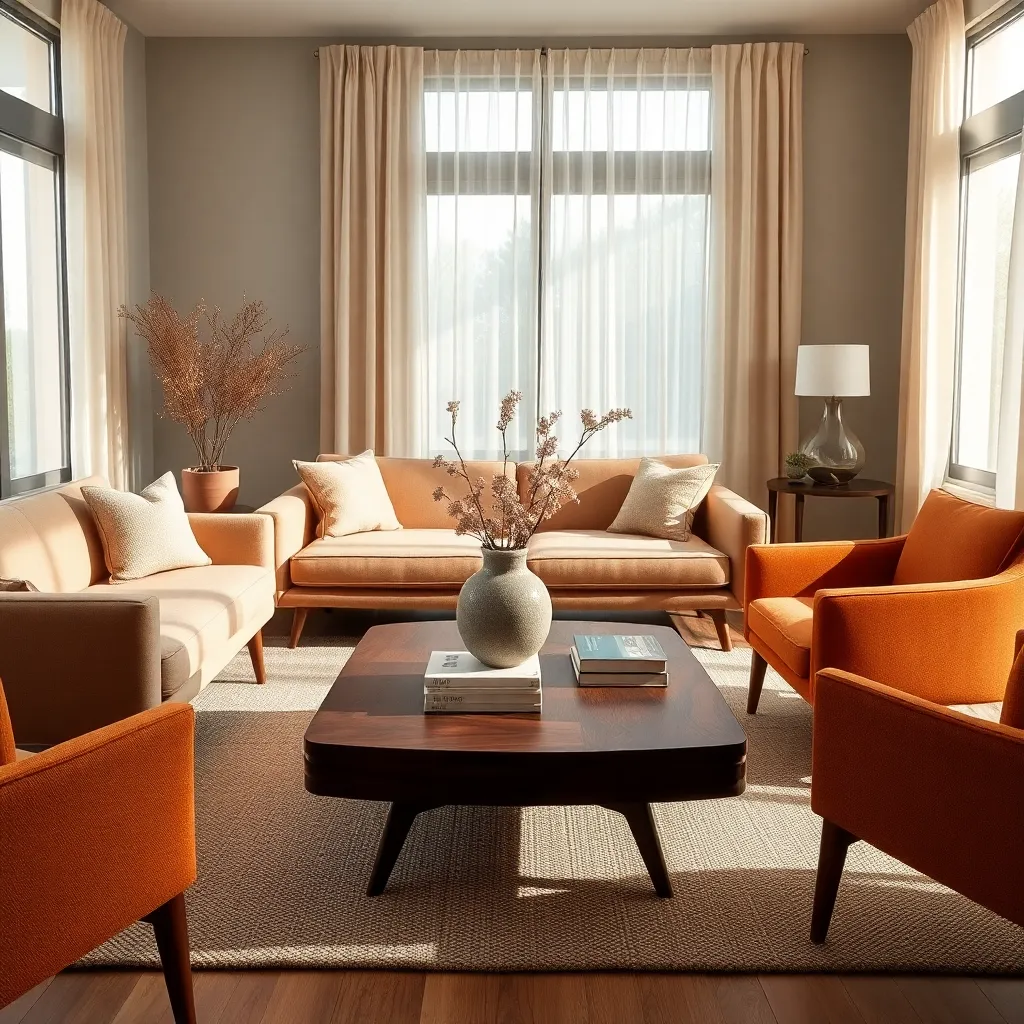
Embracing earthy, muted color palettes is a cornerstone of the mid-century modern aesthetic, providing a calm and inviting backdrop. Start with foundational hues like olive green, burnt sienna, and warm beige, which evoke a sense of nature and tranquility.
Layering these shades can add depth and interest to any room without overwhelming the space. Consider using a soft, muted terracotta for accent walls or plush textiles to introduce warmth and texture.
For those who enjoy experimenting, try pairing these earthy tones with subtle blues or mustard for a refreshing twist. This approach maintains the natural feel while injecting a bit of personality and flair into your décor.
Additionally, incorporating natural materials such as wood, leather, and stone can enhance the organic vibe of these color palettes. Opt for walnut or teak furniture to complement the earthy tones, creating a harmonious and cohesive look throughout your home.
Highlight Natural Wood Elements
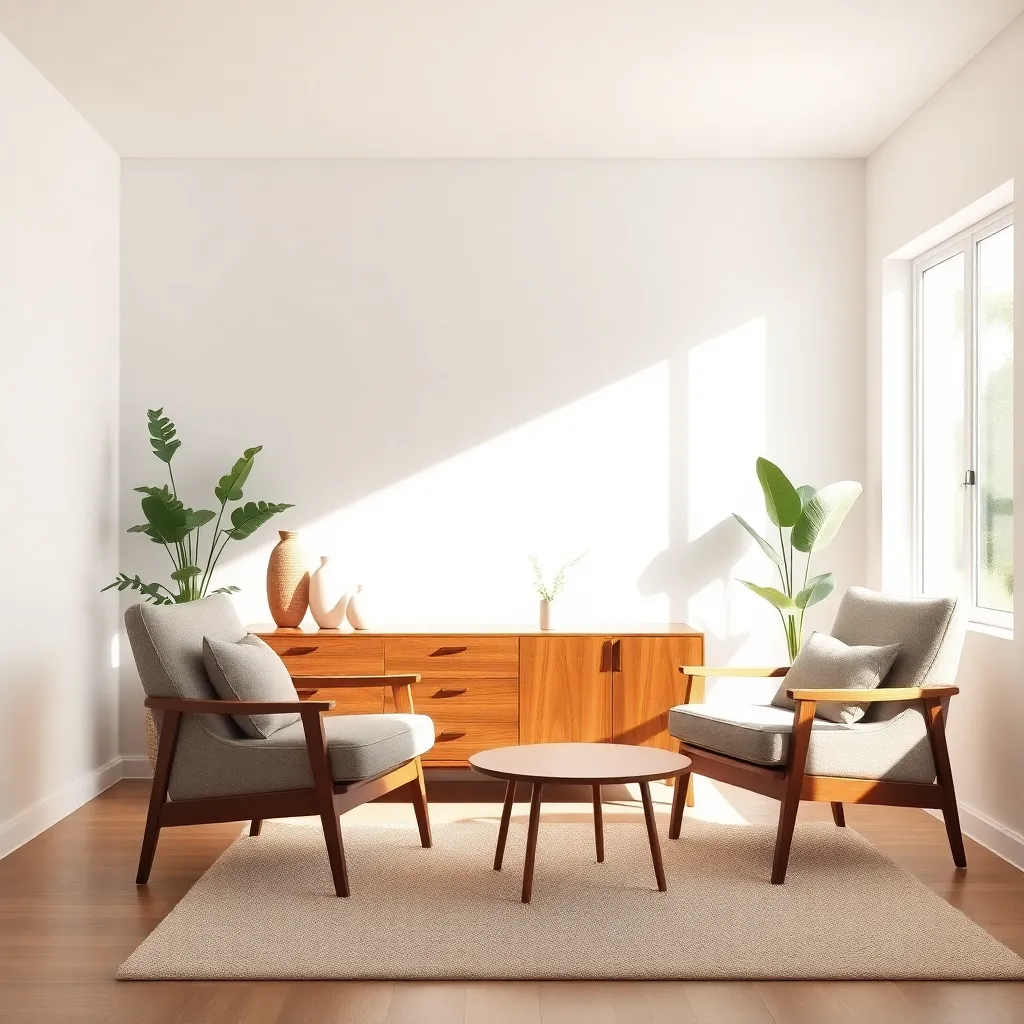
Emphasizing natural wood elements is a cornerstone of mid-century modern design, and doing so brings warmth and authenticity to any space. Start by incorporating pieces made from teak, walnut, or oak, as these woods are iconic to the mid-century aesthetic.
Consider a sleek, wooden credenza or a set of chairs to add character and functionality to your room. Pair these with neutral or muted upholstery to let the wood’s natural beauty shine without overwhelming the space.
For those new to this style, begin with smaller accents like wooden picture frames or a coffee table. These items can effortlessly complement a range of existing decor and are easy to update if your style evolves.
Advanced decorators might experiment with mixing different wood tones, creating a layered look that adds depth. Ensure your wood finishes are cohesive to maintain a harmonious atmosphere, even when integrating various shades.
Mix Textures with Rugs and Fabrics
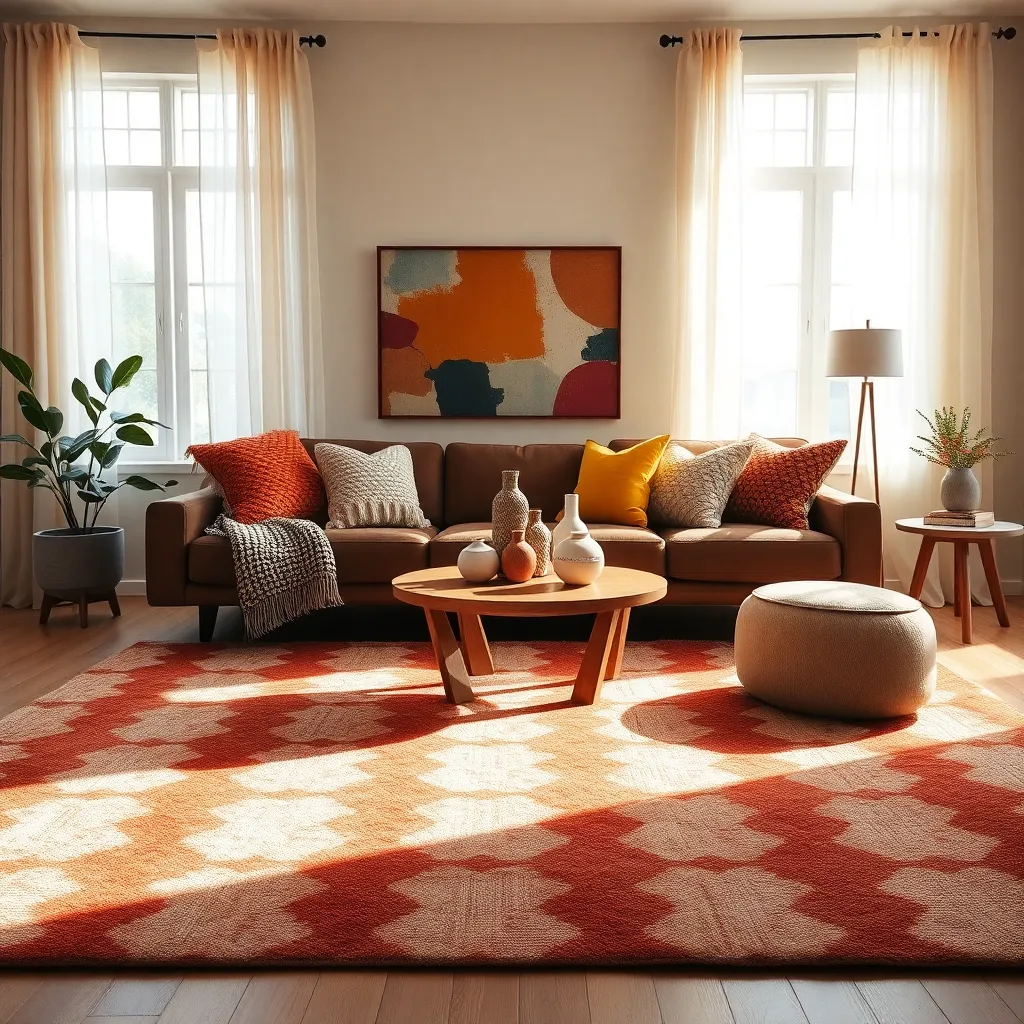
To infuse texture into a mid-century modern space, consider layering rugs and fabrics to create visual depth. Start with a neutral base rug in a natural fiber like wool or jute, then layer a smaller, patterned rug on top for contrast and interest.
Mixing textures in fabrics can elevate the tactile experience of the room. Pair a sleek, leather sofa with plush, velvet cushions in complementary colors, like mustard or teal, to maintain a cohesive mid-century palette.
Incorporate a variety of fabric textures through your choice of curtains, throws, and upholstery. Opt for linen or cotton curtains for a light, airy feel, and balance them with a chunky knit throw draped over an armchair for warmth and a cozy touch.
For those looking to delve deeper into texture mixing, experiment with different fabric patterns while keeping a unified color scheme. Combine geometric prints with subtle stripes or abstracts, ensuring they share a similar hue to avoid visual chaos and maintain the mid-century aesthetic.
Opt for Geometric Patterns
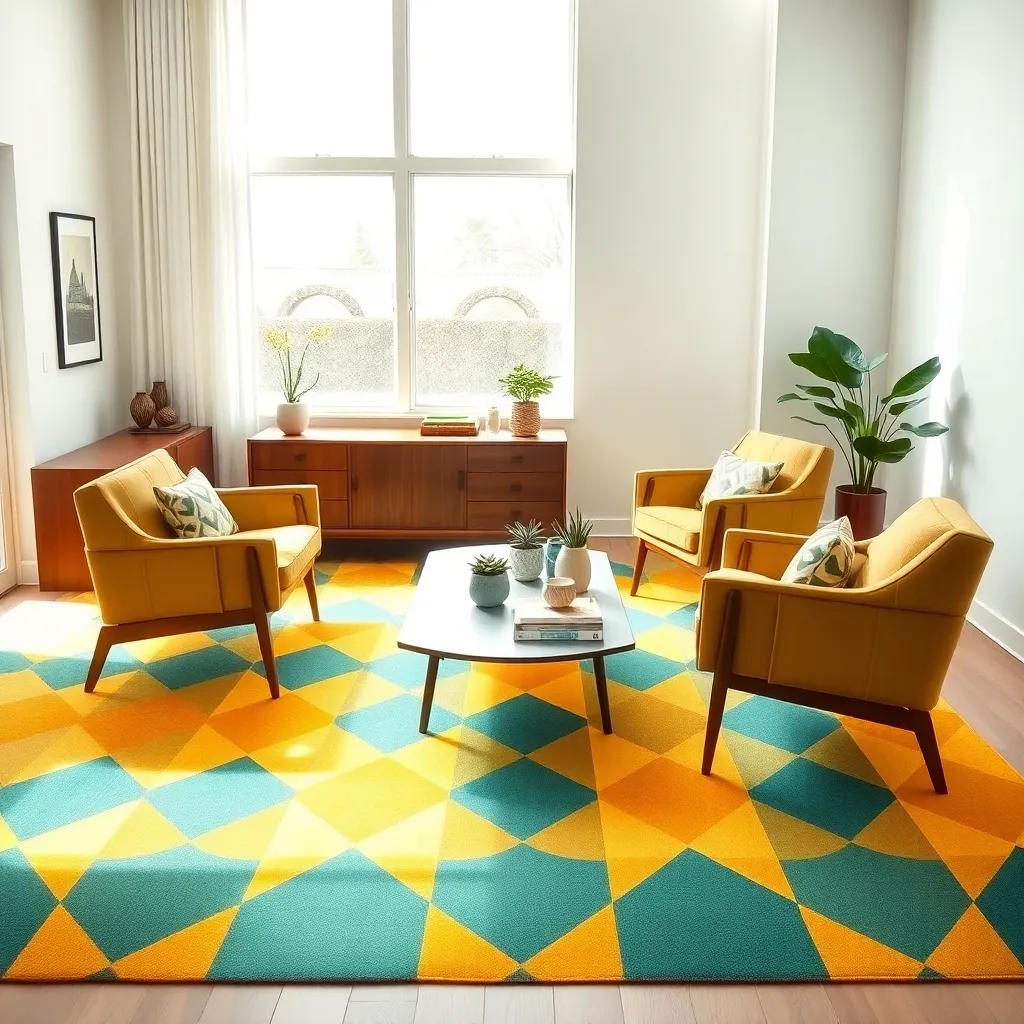
Geometric patterns are a hallmark of mid-century modern design, offering a bold and stylish way to inject personality into your home. One practical approach is incorporating these patterns through wallpaper or accent walls, which can instantly transform a room without requiring a full renovation.
Consider using geometric patterns on throw pillows or rugs to add visual interest to your living space. Opt for patterns that complement your existing color scheme, such as muted tones for a subtle effect or vibrant hues for a more dramatic statement.
For those looking to make a bold statement, geometric furniture pieces such as a hexagonal coffee table or an angular shelving unit can serve as focal points. These pieces not only add character but also help to break up the monotony of straight-edged furniture typically found in living rooms.
When layering geometric patterns, it’s important to maintain balance to avoid overwhelming the space. Mix different scales of patterns—a large-scale rug paired with smaller geometric prints on cushions can create a harmonious look without clashing.
Display Retro-Inspired Artworks
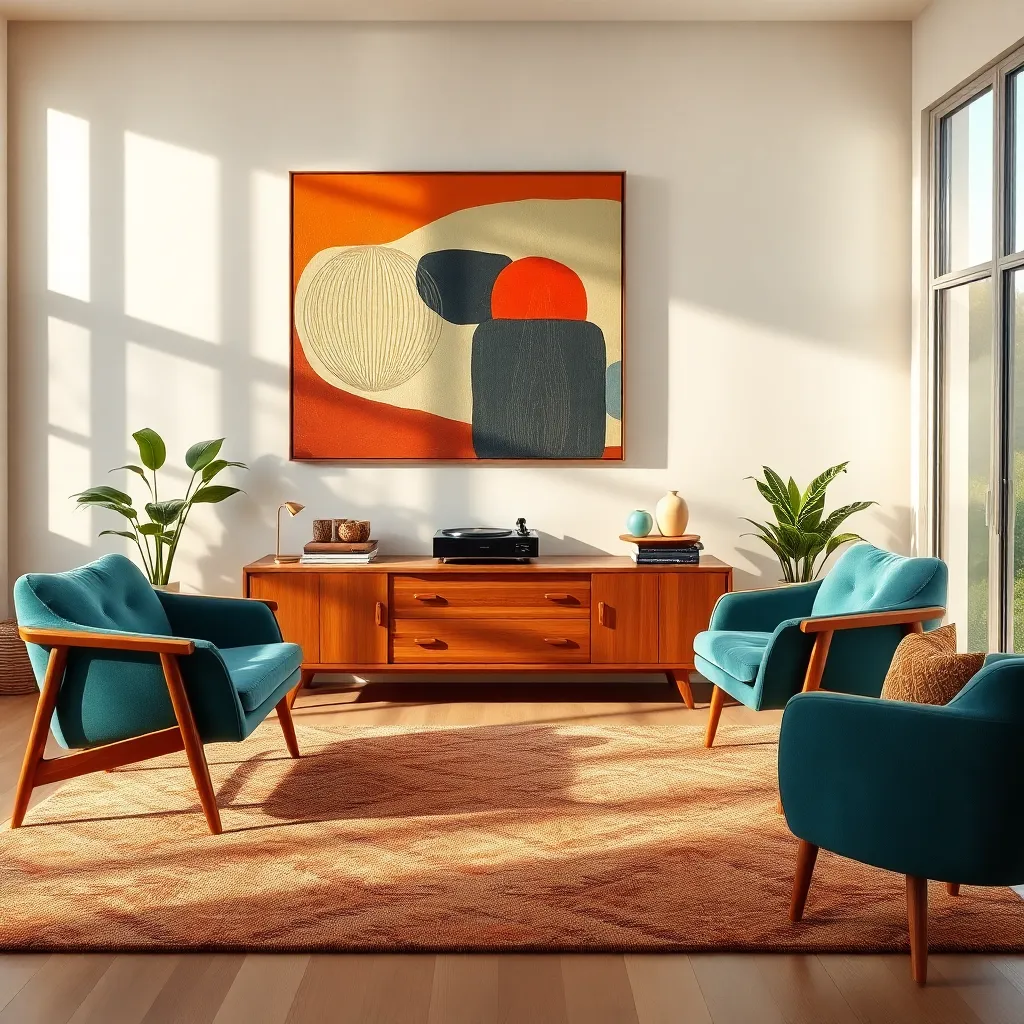
Retro-inspired artworks can instantly add character and historical charm to a mid-century modern space. To start, look for pieces that feature bold colors and abstract forms, common in the mid-century art movement. These can include reproductions of works by artists like Ray Eames or Jackson Pollock, which fit seamlessly into this design era.
Placement of these artworks is crucial to maintain a cohesive look. Consider hanging a large, colorful abstract piece above a simple, wooden credenza to create a stunning focal point in your living room. For a more advanced approach, curate a gallery wall with a mix of retro prints and vintage finds, ensuring the frames are sleek and minimal to keep the focus on the art itself.
When it comes to color schemes, complement your retro artwork with the classic mid-century palette of teals, oranges, and mustard yellows. These hues will enhance the artwork and tie the room together. Beginners might start by incorporating these colors into throw pillows or rugs, while more experienced decorators could paint an accent wall to create a bolder impact.
For a unique touch, seek out original vintage pieces at flea markets or online auctions. Authentic mid-century art can often be found at a reasonable price and will add a layer of authenticity and sophistication to your decor. Remember to balance the room by not overloading it with too many pieces, allowing each artwork to breathe and be appreciated in its own right.
Use Clean, Simple Lines
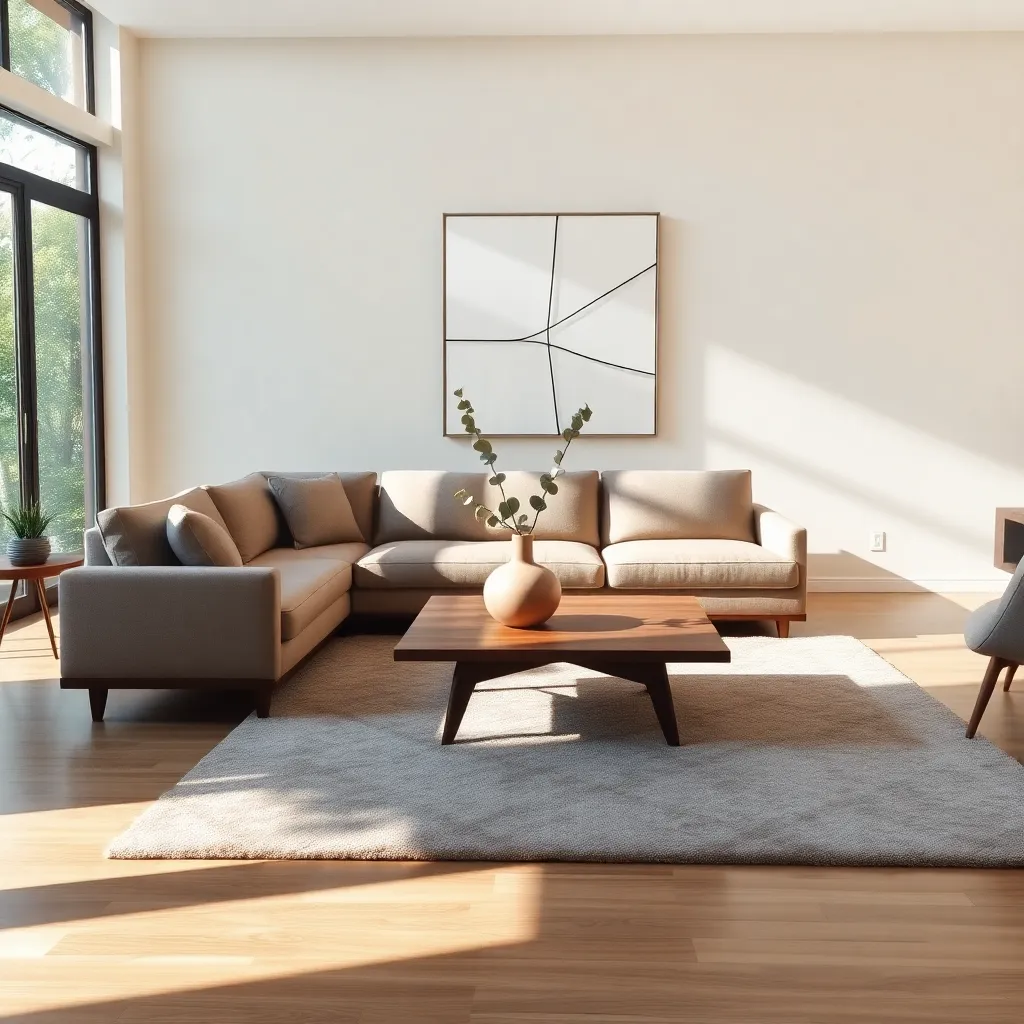
To achieve a mid-century modern look, focus on incorporating clean, simple lines in your furniture and decor. Opt for pieces like a sleek, low-profile sofa or an iconic Eames chair that emphasize this style’s hallmark simplicity and elegance.
Consider using materials like wood, metal, and leather that enhance the clean lines of your furniture. Pair these materials with neutral color schemes, such as whites, grays, and browns, to create a harmonious, understated look that lets the design speak for itself.
Strategically place furniture to highlight their lines and silhouette. For instance, position a rectangular dining table parallel to a wall adorned with geometric artwork to play up the linear theme and maintain visual balance.
For those looking to add an advanced touch, integrate built-in shelving or cabinetry with minimalistic hardware. This not only emphasizes the clean lines but also maximizes space efficiency and maintains a clutter-free environment.
Add Statement Lighting Fixtures
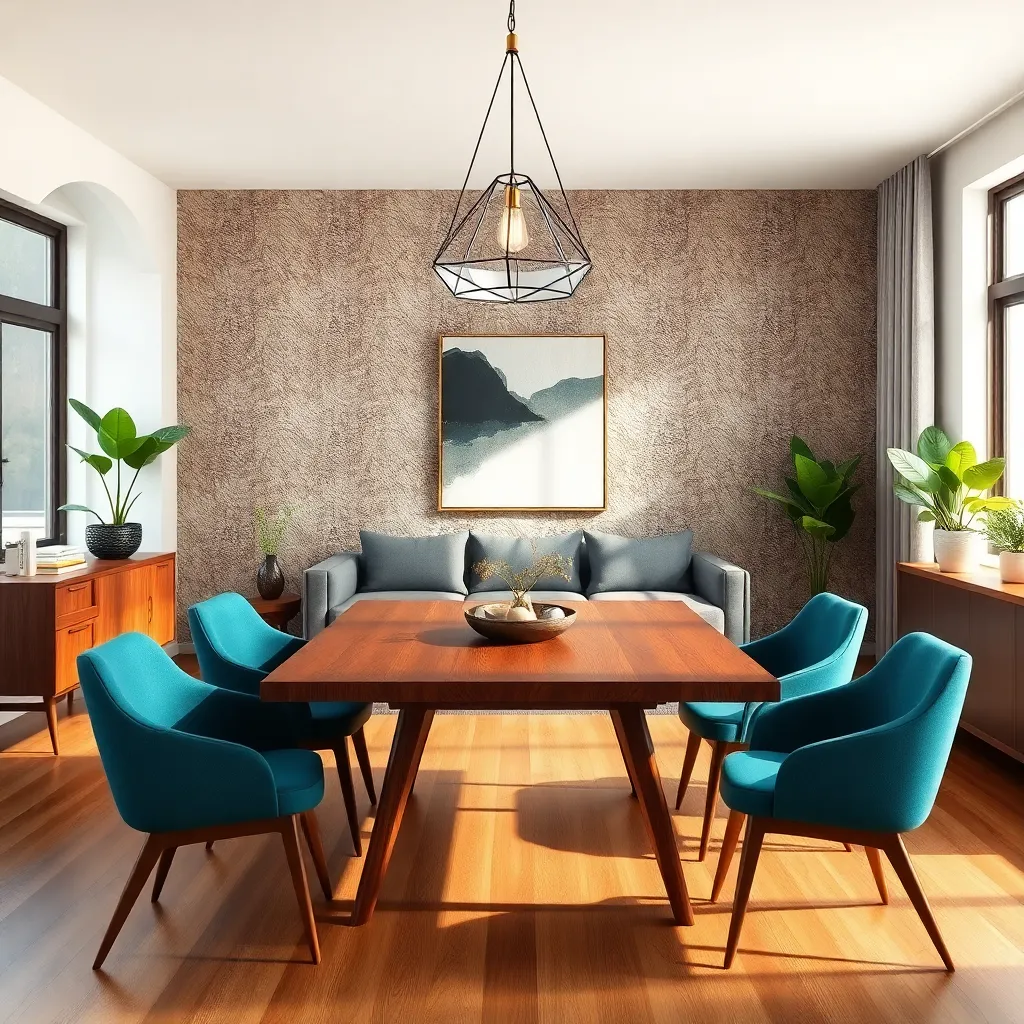
Incorporating statement lighting fixtures is an excellent way to infuse your space with mid-century modern charm. Look for pieces like Sputnik chandeliers or arc floor lamps, which are iconic to the era and can serve as both functional and artistic elements in any room.
Consider using materials such as brass, brushed steel, or frosted glass to ensure your lighting choices align with mid-century aesthetics. Placement is crucial; hang chandeliers in dining areas or foyers to create a focal point, while floor lamps can accentuate corners and reading nooks.
For those just starting, begin with one bold fixture and let it guide the room’s mood and color palette. Advanced decorators might layer lighting with a mix of overhead and task lights, ensuring each area of the room is well-lit and visually interesting.
Be mindful of scale and proportion when selecting your fixtures, ensuring they complement the room without overwhelming it. Pairing these lights with muted wall colors or natural wood furnishings will help highlight their design without competing for attention.
Integrate Indoor Plants for Freshness
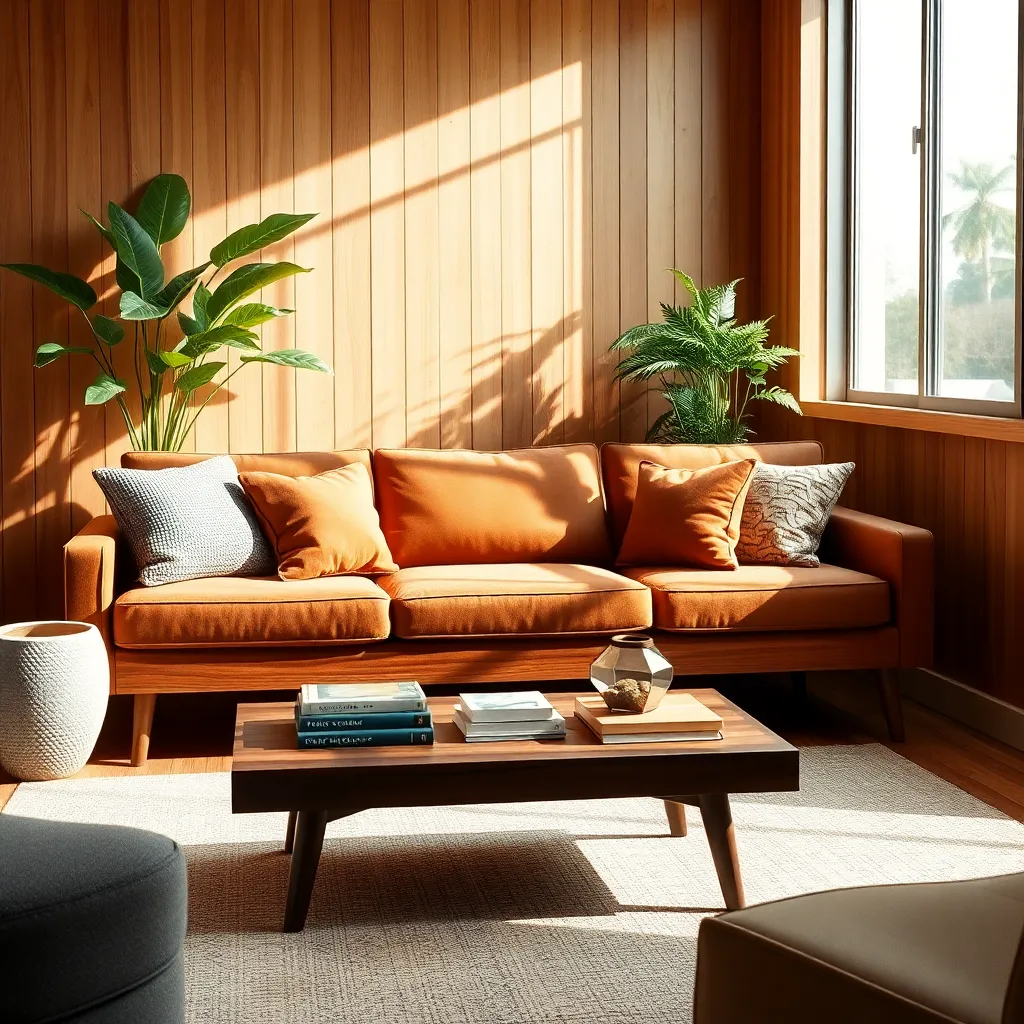
Integrating indoor plants into your mid-century modern space adds both vibrancy and a touch of nature. Start by selecting plants with architectural shapes, such as the iconic fiddle leaf fig or the sculptural snake plant, which complement the clean lines of mid-century furniture.
To enhance your decor, choose planters that reflect mid-century aesthetics, like those made of ceramic or wood with sleek finishes. Consider using stands to elevate plants, creating a dynamic visual height that draws the eye and adds interest.
When placing plants, think about how they can accentuate your room’s layout. Position taller plants in corners to soften edges, while smaller options can be clustered on sideboards or shelves for a layered look.
For an advanced touch, incorporate a variety of plant textures and colors to create depth and contrast. Mix broad-leafed plants with delicate ferns or trailing vines to achieve a balanced yet intriguing arrangement that enhances the overall design.
Select Sleek, Minimalist Decor
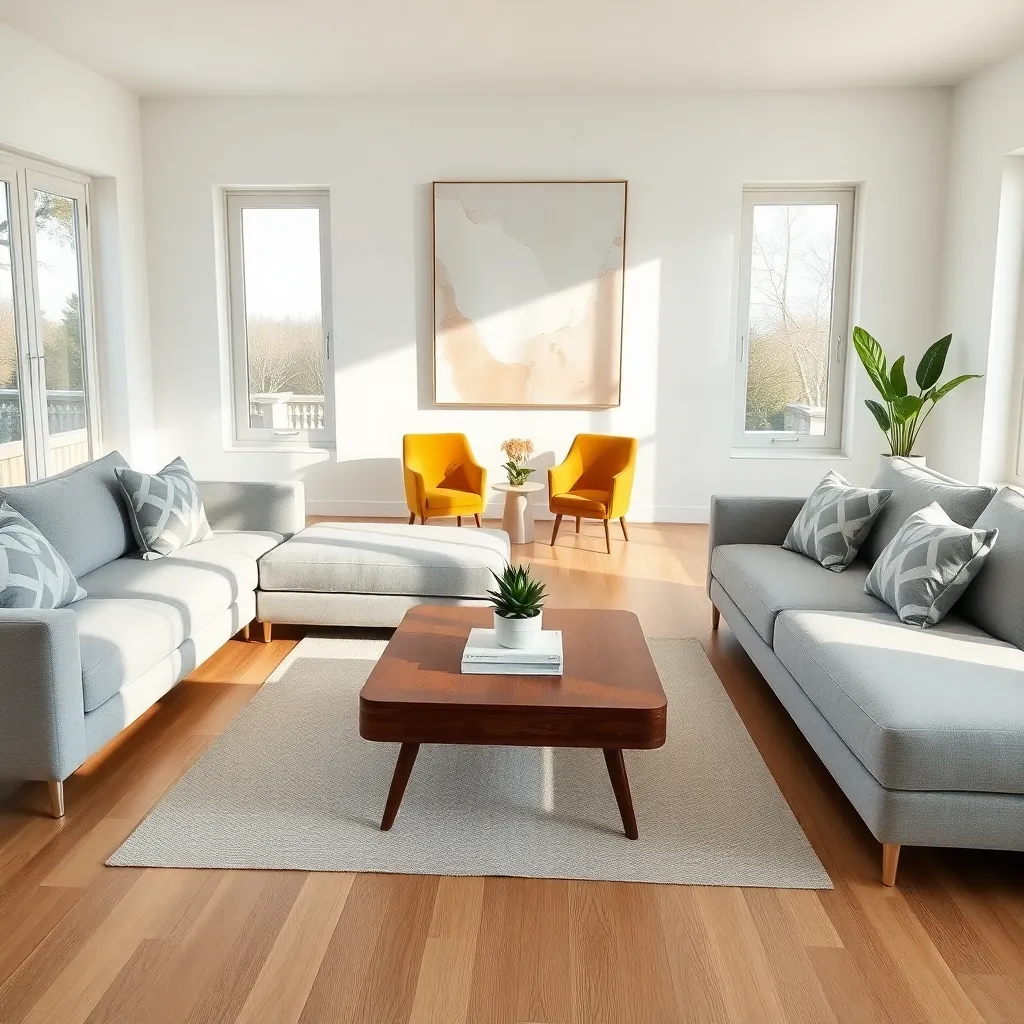
To embrace a sleek, minimalist decor in your mid-century modern space, focus on selecting furniture with clean lines and simple forms. Prioritize pieces made from natural materials like wood and leather, ensuring they harmonize with the overall aesthetic without overwhelming the space.
Consider a neutral color palette for a cohesive and timeless look. Shades of white, gray, or beige can serve as a perfect backdrop, allowing your furniture and decor elements to stand out subtly yet effectively.
Add interest and depth by incorporating a variety of textures. Mix materials like metal and glass with softer elements such as wool or cotton to create a balanced and inviting atmosphere.
To maintain the minimalist aesthetic, be selective with accessories and decor. Opt for fewer, high-quality pieces that make a statement, like a single piece of art or a striking vase, to keep your space uncluttered and sophisticated.
Balance with Open Space Layouts
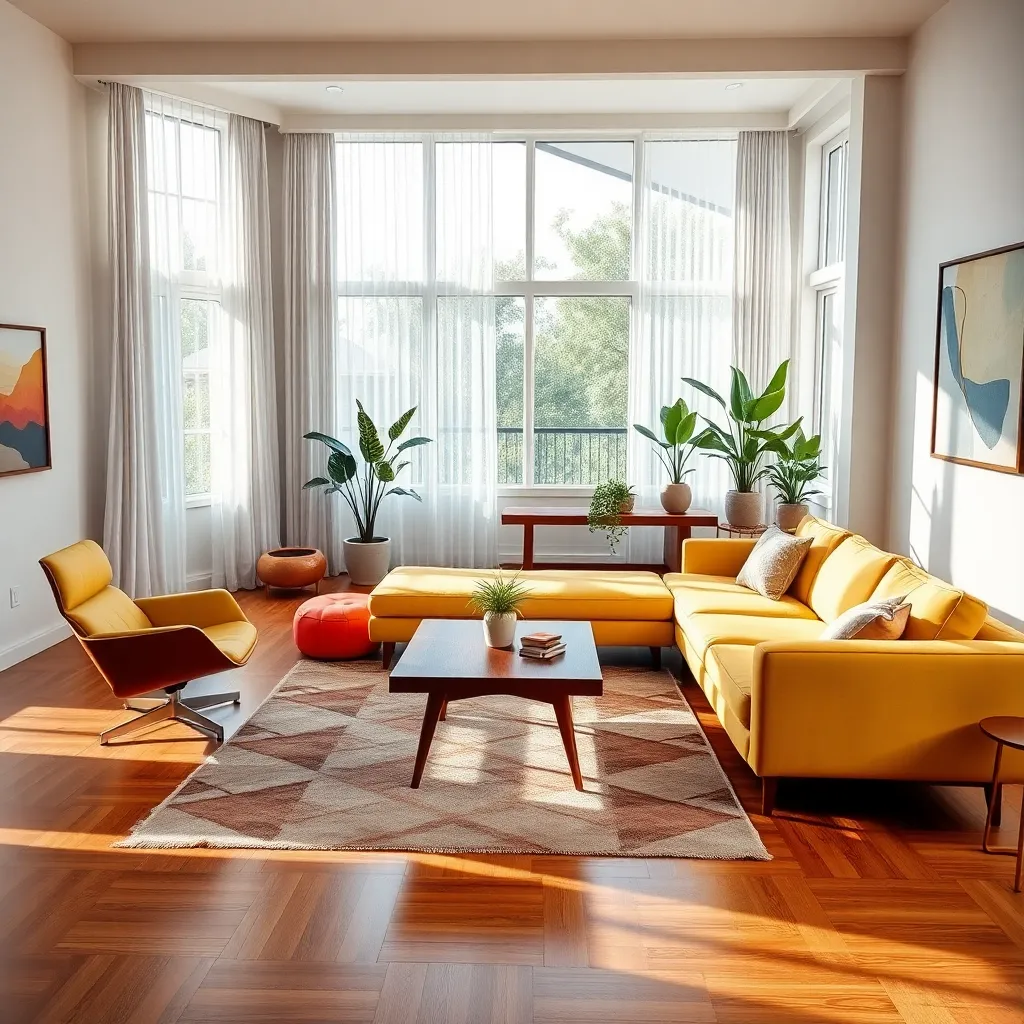
Achieving balance in open space layouts is an essential aspect of mid-century modern design. Start by ensuring that the furniture arrangement promotes a sense of flow and connection between different areas.
Consider using rugs to define different zones within your open space, such as a living area and dining nook. Select rugs with geometric patterns or natural textures to add visual interest while maintaining the minimalist aesthetic.
Furniture selection is crucial in open layouts; opt for pieces with clean lines and low profiles to maintain an unobstructed view. Place larger items like sofas and dining tables strategically to create natural partitions without interrupting the open concept.
Color plays a vital role in establishing balance in open spaces. Use a cohesive color palette throughout the area to create harmony; consider combining muted tones with vibrant accents for a balanced look.
Include Vintage Accessories Wisely
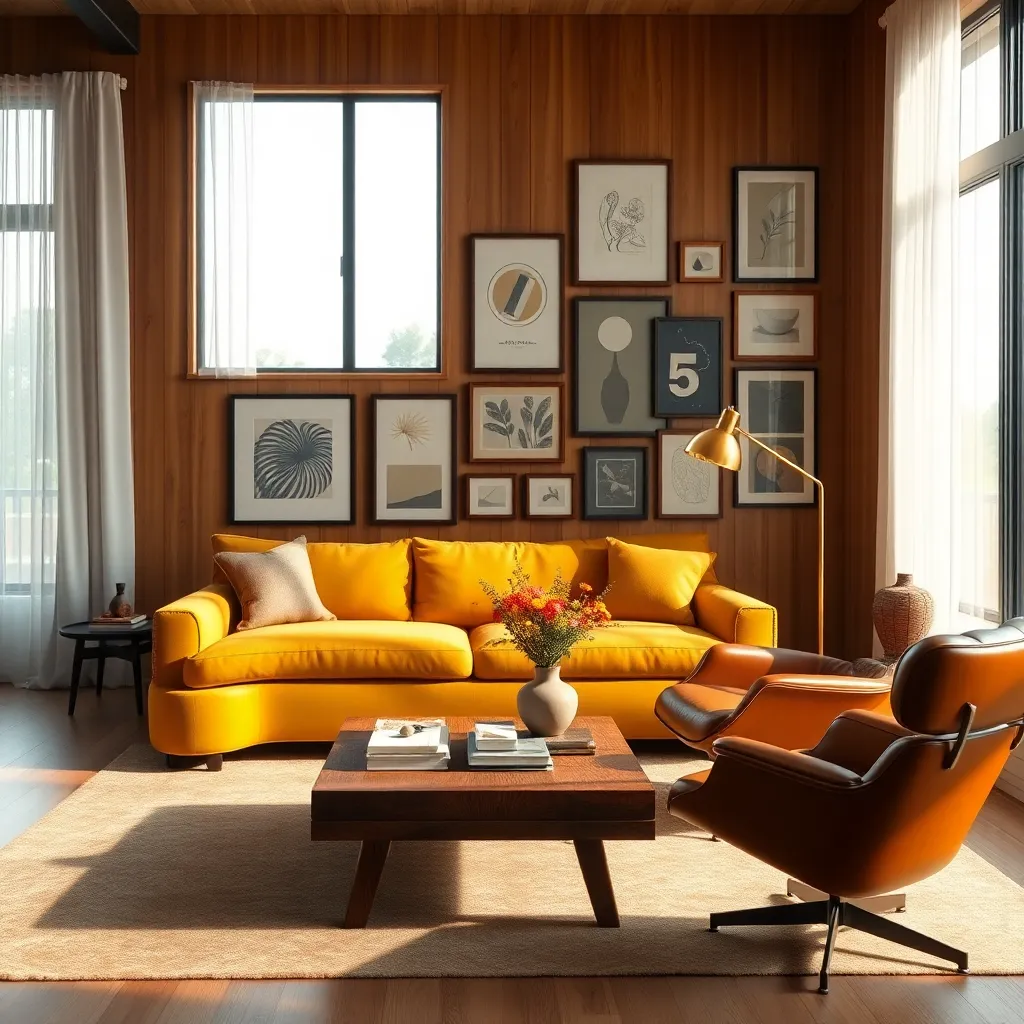
Incorporating vintage accessories can add a layer of authenticity to a mid-century modern space. Begin by selecting a few standout pieces like a sunburst clock or a sculptural lamp to act as focal points in your room.
Consider the placement of these vintage items carefully to avoid clutter. Position them strategically on a sideboard or a minimalist shelf to maintain the clean lines characteristic of mid-century design.
For color schemes, opt for accessories in earth tones like burnt orange, mustard yellow, or olive green to complement the typical mid-century palette. These colors can be balanced with neutral backgrounds to allow the vintage items to pop without overwhelming the space.
Advanced decorators might experiment with mixing and matching different eras by pairing a vintage Eames chair with a modern glass coffee table. This approach requires a keen eye for balance and proportion to ensure the space remains cohesive and stylish.
Conclusion: Growing Success with These Plants
In exploring the essence of mid-century modern design, we uncovered 12 transformative relationship concepts: embracing simplicity, valuing quality over quantity, blending past with present, creating open communication spaces, highlighting individuality, fostering trust through transparency, balancing independence and togetherness, respecting boundaries, cherishing shared history, cultivating growth, nurturing emotional warmth, and celebrating authenticity. Each principle mirrors the timeless elegance of mid-century aesthetics, encouraging a harmonious and enduring bond.
To invigorate your relationship with these insights, start by choosing one concept to focus on this week—perhaps creating a dedicated space for open conversation or celebrating the unique qualities you each bring to the relationship. Implementing even a single idea can pave the way for deeper connection and understanding.
Remember, relationships, like interiors, thrive with mindful attention and care. Bookmark this article as your guide to nurturing love and harmony, revisiting it whenever you need inspiration or a gentle reminder of what’s possible. As you apply these principles, envision a future where your relationship is as resilient and beautiful as the most cherished mid-century piece—standing the test of time with grace and joy.
